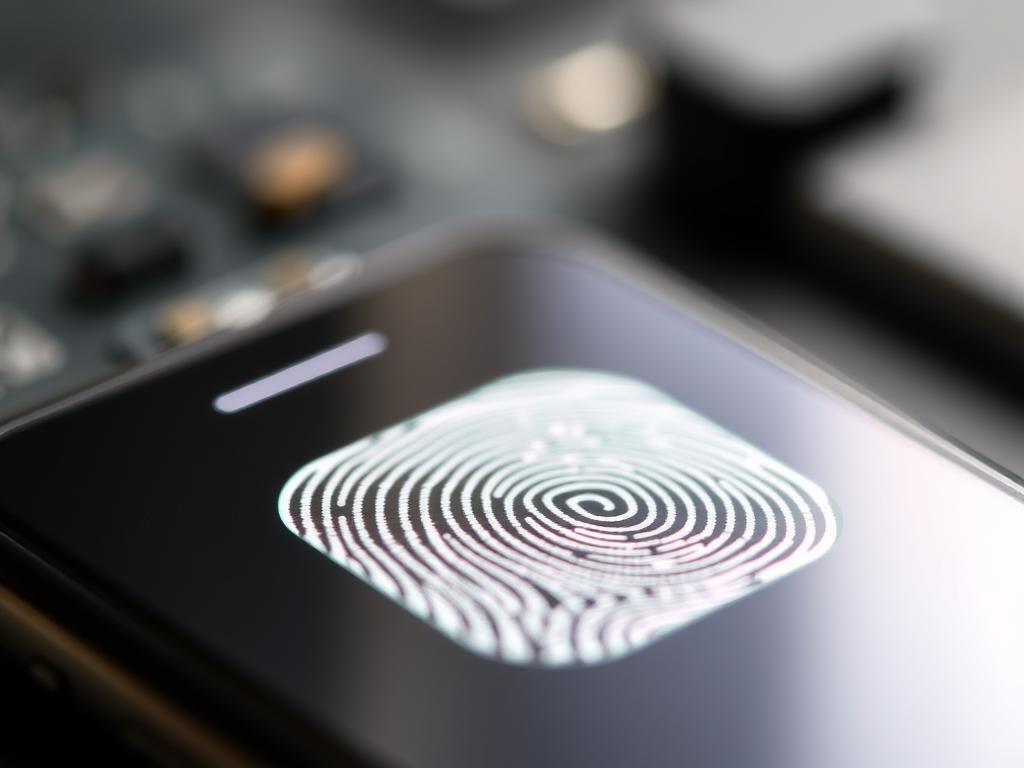Your phone’s biometric authentication system is key for secure access control. A broken fingerprint sensor can be a big hassle. But, many problems can be fixed with simple steps.
Fixing your phone’s fingerprint sensor is simpler than you might think. Our expert advice will help you get your device working again quickly. We’ll show you how to tackle issues like poor recognition or a sensor that won’t work at all.
Key Takeaways
- Learn how to troubleshoot common fingerprint sensor issues
- Discover simple repair methods to revive your phone’s biometric authentication
- Understand the importance of secure access control for your device
- Get expert tips on maintaining your phone’s fingerprint sensor
- Find out when to seek professional help for complex issues
Understanding Fingerprint Sensors
Fingerprint sensors have become common in smartphones. They boost security and make using your phone easier. With a fingerprint sensor, you can unlock your phone and get to your apps and data quickly.
What Is a Fingerprint Sensor?
A fingerprint sensor, or fingerprint scanner, captures and recognizes your fingerprint’s unique patterns. It’s used for unlocking your device and verifying your identity.
How Does a Fingerprint Sensor Work?
The touch sensor in fingerprint sensors detects your fingerprint’s ridges and valleys. When you touch the sensor, it takes a picture of your fingerprint. It then checks this image against your stored data. If they match, your device unlocks.
Types of Fingerprint Sensors in Mobile Devices
There are two main types of fingerprint sensors in phones: capacitive and optical. Capacitive fingerprint sensors detect the electric charge in your fingerprint. Optical fingerprint sensors use light to take a picture of your fingerprint.
Fingerprint scanners make unlocking your phone easy and secure. Knowing how they work and the types available helps with troubleshooting and choosing the right security for your device.
Common Issues with Fingerprint Sensors
Fingerprint sensors are handy but can face problems. Knowing these issues helps fix and keep your Security Lock working well.
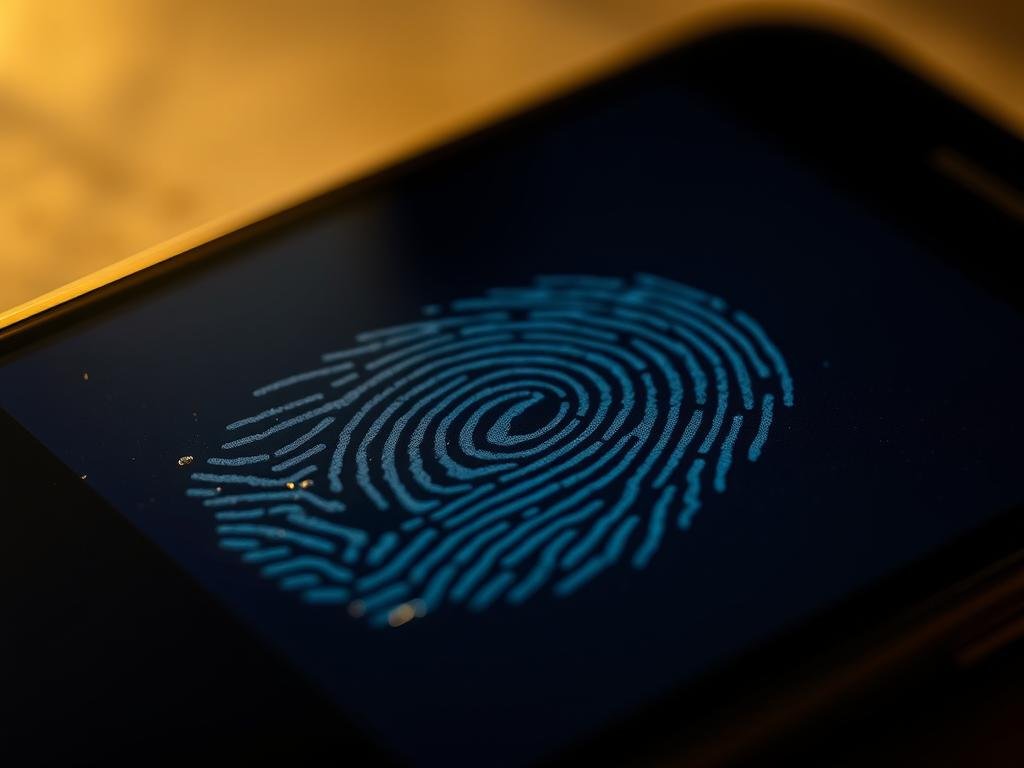
Recognition Failures
One big problem is when the sensor can’t recognize your fingerprint. This might happen for a few reasons:
- Dirty or wet fingers
- Scars or injuries on the fingertips
- A dirty or damaged Touch ID Sensor
To solve this, make sure your fingers are clean and dry. Also, cleaning the sensor area regularly can help it work better.
Hardware Malfunctions
Hardware problems can also mess with your fingerprint sensor. Damage to the sensor or its area can make it hard to read fingerprints. Sometimes, you might need a pro to fix or replace the Biometric Authentication part.
Software Glitches
Software bugs can also cause fingerprint sensor problems. These bugs might come from the operating system or the Biometric Authentication software. Keeping your device’s software updated is key, as updates often fix known issues.
In summary, fingerprint sensors are usually reliable but can face many issues. By knowing these common problems, you can try to fix them. This keeps your device’s Security Lock working right.
Troubleshooting Steps to Fix Your Fingerprint Sensor
If your fingerprint sensor isn’t working, start with some basic troubleshooting steps. First, clean the sensor with a microfiber cloth or a soft, lint-free cloth. This removes any debris that might be blocking it.
Clean the Sensor Area
Dirt, oil, or other substances can make the sensor malfunction. Use a soft cloth to wipe it clean. If there’s stubborn dirt, dampen the cloth with water but dry it well afterward.
Restart Your Device
At times, a simple reboot can fix the issue by clearing software glitches. Restarting your device refreshes the system. This might solve the problem with your fingerprint scanner. For more detailed steps, visit this helpful resource.
Update Your Smartphone’s Software
Outdated software can cause compatibility issues, including with Biometric Recognition features like fingerprint scanning. Check for updates and install them. This can improve your fingerprint sensor’s function and enhance Secure Access Control.
By trying these initial steps, you might fix your fingerprint sensor issue. If it doesn’t work, you may need to do more troubleshooting or get professional help.
Adjusting Fingerprint Settings
If your fingerprint sensor isn’t working right, tweaking the settings might fix it. Your device’s biometric authentication settings are key to how the sensor works.
Re-adding Your Fingerprints
One easy fix is to re-add your fingerprints. This can help your device learn your fingerprint again. To do this, go to your device’s settings, find the fingerprint or biometric authentication section, and follow the steps to re-register your fingerprint.
Re-registering your fingerprint can often solve recognition problems. It’s a simple step that can greatly improve your device’s Touch ID sensor performance.
Changing Fingerprint Settings
Issues might not be with your fingerprint but with your device’s settings. You can tweak these settings to make your fingerprint sensor work better. For example, you can adjust the sensor’s sensitivity or how it reacts when it can’t recognize a fingerprint.
- Look in your device’s settings to see if you can change the fingerprint sensor’s sensitivity.
- Make sure your device’s software is current. Updates often improve biometric authentication.
- Check your security settings to ensure the fingerprint sensor is enabled and set up right.
Checking Security App Settings
Your device’s security lock settings can affect the fingerprint sensor. Some security apps or settings might mess with the sensor’s normal function. Check your security app settings to see if they’re causing the problem.
| Setting | Description | Impact on Fingerprint Sensor |
|---|---|---|
| Fingerprint Sensitivity | Adjusts how sensitive the fingerprint sensor is to fingerprints. | High sensitivity can improve recognition but may also increase false positives. |
| Biometric Authentication | Enables or disables the use of fingerprints for authentication. | Disabling this setting will prevent the fingerprint sensor from working. |
| Security Lock Timeout | Determines how long your device remains unlocked after successful biometric authentication. | A shorter timeout can enhance security but may require more frequent authentication attempts. |
By adjusting these settings and making sure your fingerprints are registered right, you can often fix fingerprint sensor issues. This keeps your device secure and convenient for biometric authentication.
Hardware Solutions for Fingerprint Sensors
If your fingerprint scanner isn’t working right, check it for damage. Problems with the fingerprint sensor often come from hardware issues. You might need some tech skills or help from a pro to fix it.
Inspecting for Physical Damage
Start by looking for any damage on your fingerprint sensor. Look for cracks, dents, or other damage that could be causing problems. Sometimes, just looking at it can tell you what’s wrong.
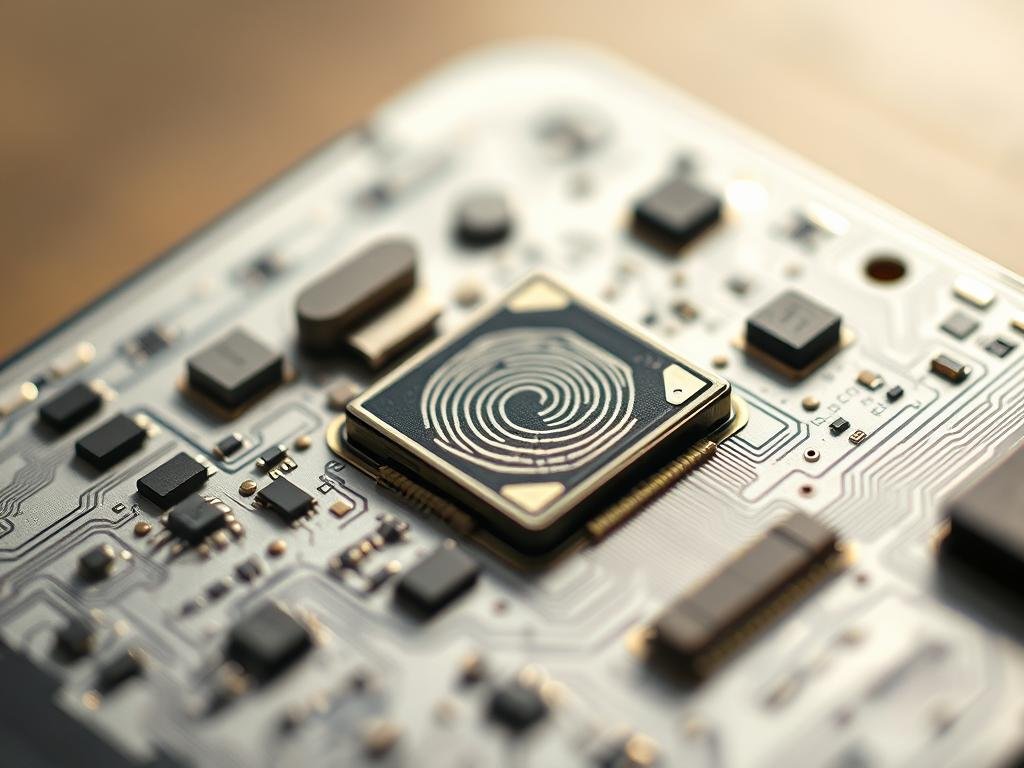
Replacing the Fingerprint Sensor Module
If your Touch Sensor is too damaged to fix, you might need a new module. Replacing it can be tricky and needs special tools. Make sure the new part fits your device to keep Secure Access Control.
| Step | Description | Tools Required |
|---|---|---|
| 1 | Disassemble the device to access the fingerprint sensor module. | Specialized screwdrivers, plastic spudger |
| 2 | Carefully disconnect the sensor module from the motherboard. | Tweezers, connector removal tool |
| 3 | Install the new fingerprint sensor module and reconnect it to the motherboard. | New fingerprint sensor module, tweezers |
Seeking Professional Repair Services
If you’re not sure about fixing it yourself or if it doesn’t work after trying, get help from a pro. Authorized service centers have the right tools and know-how to fix your Fingerprint Scanner.
Trying these hardware fixes can help solve problems with your fingerprint sensor. This keeps your device’s Secure Access Control working well and safely.
Software Fixes for Fingerprint Issues
If your device’s biometric authentication isn’t working, a software fix might help. Sometimes, a software problem can make the fingerprint sensor not work right. Try resetting your device or doing a factory reset to fix it.
Resetting Your Device
Resetting your device can solve software problems that affect the fingerprint sensor. Just restart your device. This clears out bugs that might be stopping the biometric recognition from working.
Factory Reset as a Last Resort
If restarting doesn’t work, you might need a factory reset. This is a big step that wipes out all your data, so use it only when necessary. Make sure you back up all your important stuff first. A factory reset can fix deep software problems that mess up the fingerprint sensor.
To do a factory reset, go to your device’s settings. Choose “Backup and reset,” then “Factory data reset.” Just follow the steps to finish it.
Using Diagnostic Tools
Some devices have diagnostic tools to find and fix fingerprint sensor problems. Check your device’s settings or the manufacturer’s website for these tools. They can test your device’s hardware and software to find the issue.
| Diagnostic Tool | Purpose | Benefit |
|---|---|---|
| Fingerprint Scanner Test | Tests the fingerprint sensor’s ability to recognize fingerprints | Identifies hardware or software issues |
| System Update Check | Ensures the device is running the latest software | Resolves compatibility issues and improves security |
| Cache Cleaner | Clears temporary data that might be causing issues | Improves device performance and resolves software glitches |
Using these diagnostic tools can help you find and fix the problem. This ensures your device’s security lock and biometric features work right.
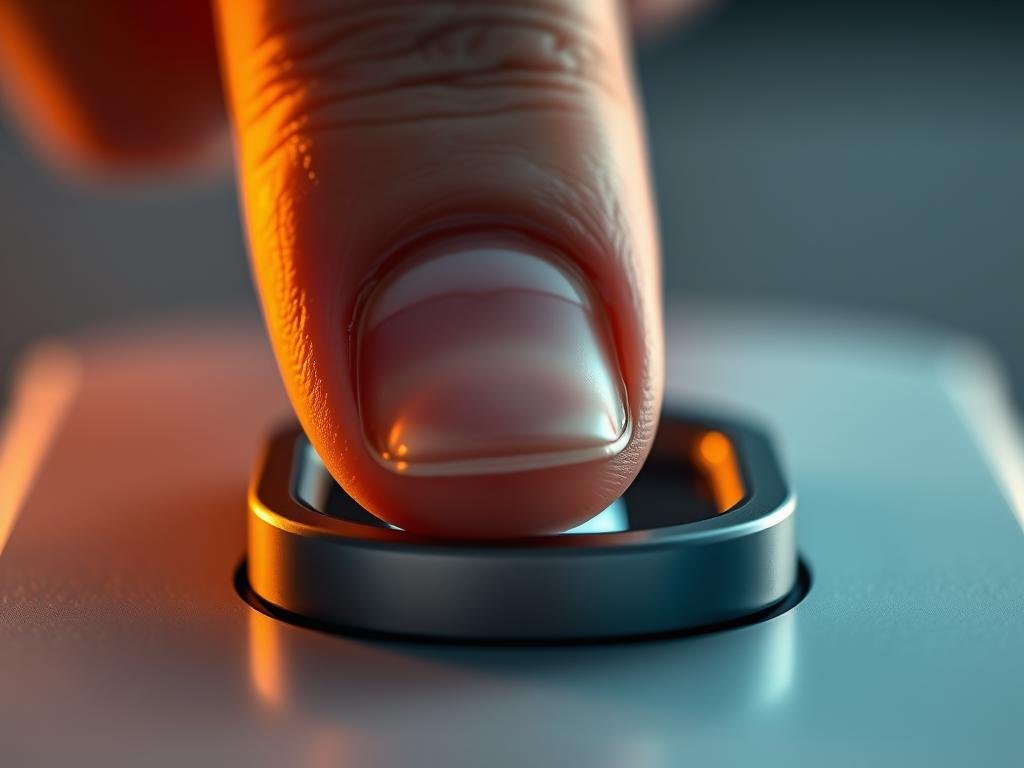
Preventative Measures for Fingerprint Sensors
Keeping your fingerprint scanner working well is simple. It starts with a few easy steps. Taking care of your device’s touch sensor is key for secure access control and a longer life.
To keep your fingerprint sensor in top shape, follow these tips:
Keeping the Sensor Clean
Dirt, oil, and other stuff can mess with the sensor’s fingerprint reading. Clean the sensor area with a soft cloth often. Also, don’t let your device get too hot or wet, as it can harm the sensor.
Regular Software Updates
It’s vital to update your phone’s software for your fingerprint scanner’s security and function. Updates from the maker can boost the sensor’s performance and fix problems. A study on biometric tech shows updates are key for better security [biometric authentication research].
| Update Type | Benefits for Fingerprint Sensor |
|---|---|
| Security Patches | Enhances secure access control by fixing vulnerabilities |
| Feature Updates | May improve fingerprint recognition speed and accuracy |
| Bug Fixes | Resolves issues that could cause sensor malfunctions |
Using a Screen Protector Wisely
A screen protector can shield your device’s screen, including the fingerprint sensor area, from scratches. But, pick a high-quality one made for your device and follow the maker’s guide to avoid problems.
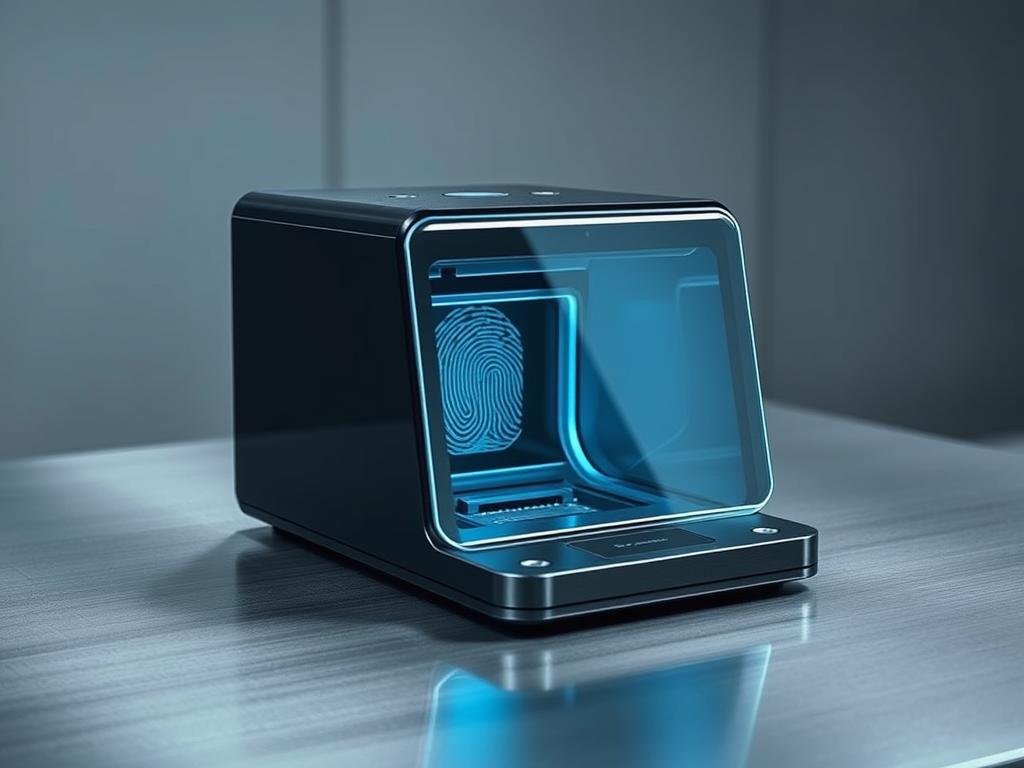
By taking these steps, you can greatly lower the chance of fingerprint scanner problems. This ensures it keeps giving you secure and convenient access to your device.
When to Seek Professional Help
If you’ve tried everything and your fingerprint sensor won’t work, it’s time to get help from a pro. Even if you’ve done all you can, a broken Biometric Authentication system means the problem is serious.
Signs of Major Hardware Faults
Physical damage, like a drop or water damage, can hurt your device’s fingerprint sensor. If it’s damaged, you might need a repair or a new one. Look out for these signs:
- Persistent failure to recognize fingerprints
- Physical damage to the sensor area
- Complete loss of functionality
Difficulty in Software Troubleshooting
It could be a software problem, not a hardware one. If updates and Touch ID Sensor fixes don’t work, get a pro’s help. They can figure out what’s wrong and fix it.
“For complex issues related to fingerprint readers and security software, visiting a professional can provide a more in-depth diagnosis and repair.” – Dell Support
Warranty and Repair Options
If your device is under warranty, you might get free fixes or a new one. Check if your warranty is active and what Security Lock fixes are available. Companies usually help with these problems.
For more help with fingerprint and security software issues, visit the Dell Support page.
Conclusion: Maintaining Your Fingerprint Sensor
To keep your device’s Fingerprint Scanner working well, regular care is key. Make sure to clean it often and keep your software up to date. This helps avoid problems with Biometric Recognition.
Best Practices for Maintenance
Cleaning the fingerprint sensor area regularly keeps it accurate and quick. Also, don’t forget to update your software. These updates often bring better security and Biometric Recognition.
Prolonging Device Lifespan
Following these easy steps can make your device last longer. Taking good care of your Fingerprint Scanner means it will keep unlocking your device fast and safely. This protects your device and personal info.
Looking after your fingerprint sensor is easy and makes using your device better. By keeping your device in good shape, you get the most out of Secure Access Control and advanced Biometric Recognition.
FAQ
What is a fingerprint sensor and how does it work?
A fingerprint sensor uses your unique fingerprint to verify your identity. It detects the ridges and valleys on your fingerprint. Then, it compares them to stored data.
Why is my fingerprint sensor not recognizing my fingerprint?
There are a few reasons why your fingerprint sensor might not work. It could be dirty, your fingers wet, or there’s a software glitch. Try cleaning the sensor and re-adding your fingerprint to fix it.
How do I clean the fingerprint sensor on my phone?
To clean the sensor, gently wipe it with a soft cloth or cotton swab. Avoid harsh chemicals or abrasive materials that could damage it.
Can I replace the fingerprint sensor on my phone myself?
Replacing the fingerprint sensor can be tricky and might need a pro. If you’re not up for DIY repairs, get professional help.
How can I prevent issues with my fingerprint sensor?
To avoid problems, keep the sensor clean and update your software regularly. Also, use a screen protector wisely. This keeps the sensor working well and ensures secure access.
What should I do if my fingerprint sensor is damaged?
If your sensor is damaged, check for physical harm. You might need to replace it or get professional help. If your device is under warranty, you could get free repairs or a replacement.
How do I know if my fingerprint sensor issue is hardware or software related?
To figure out if it’s a hardware or software problem, try troubleshooting. Restart your device, update your software, and re-add your fingerprint. If it doesn’t work, it might be a hardware issue.
Can a factory reset fix fingerprint sensor issues?
A factory reset can solve software problems with your fingerprint sensor. But, it will erase all your data. Use it as a last resort and back up your data first.
How often should I update my smartphone’s software to maintain my fingerprint sensor’s functionality?
Update your software regularly to keep your fingerprint sensor working. This ensures you have the latest security patches and features.
Are there any diagnostic tools available to troubleshoot fingerprint sensor issues?
Yes, some devices have diagnostic tools for fingerprint sensor problems. Check your device’s settings or the manufacturer’s website for more info.
